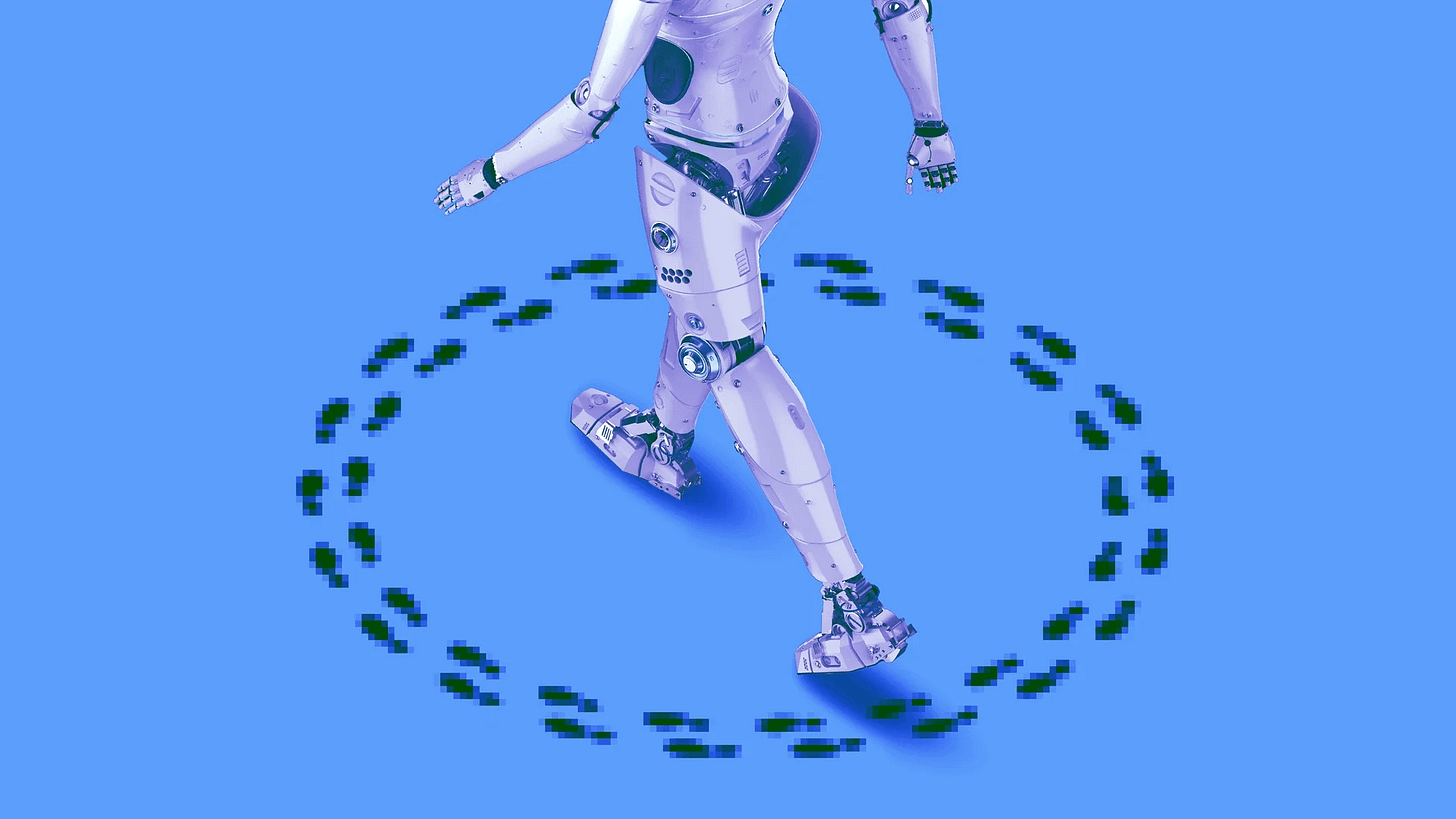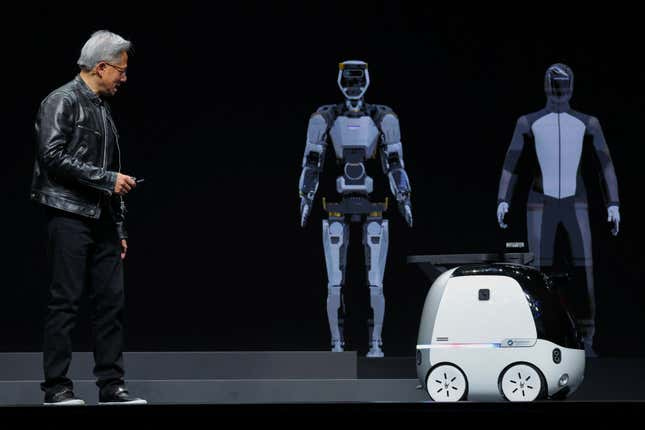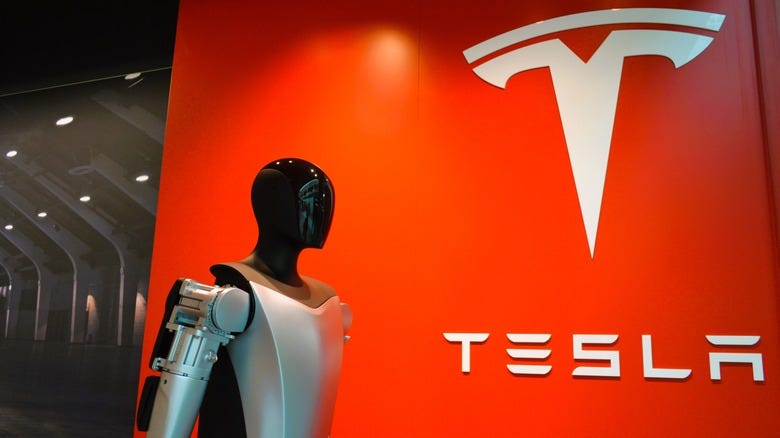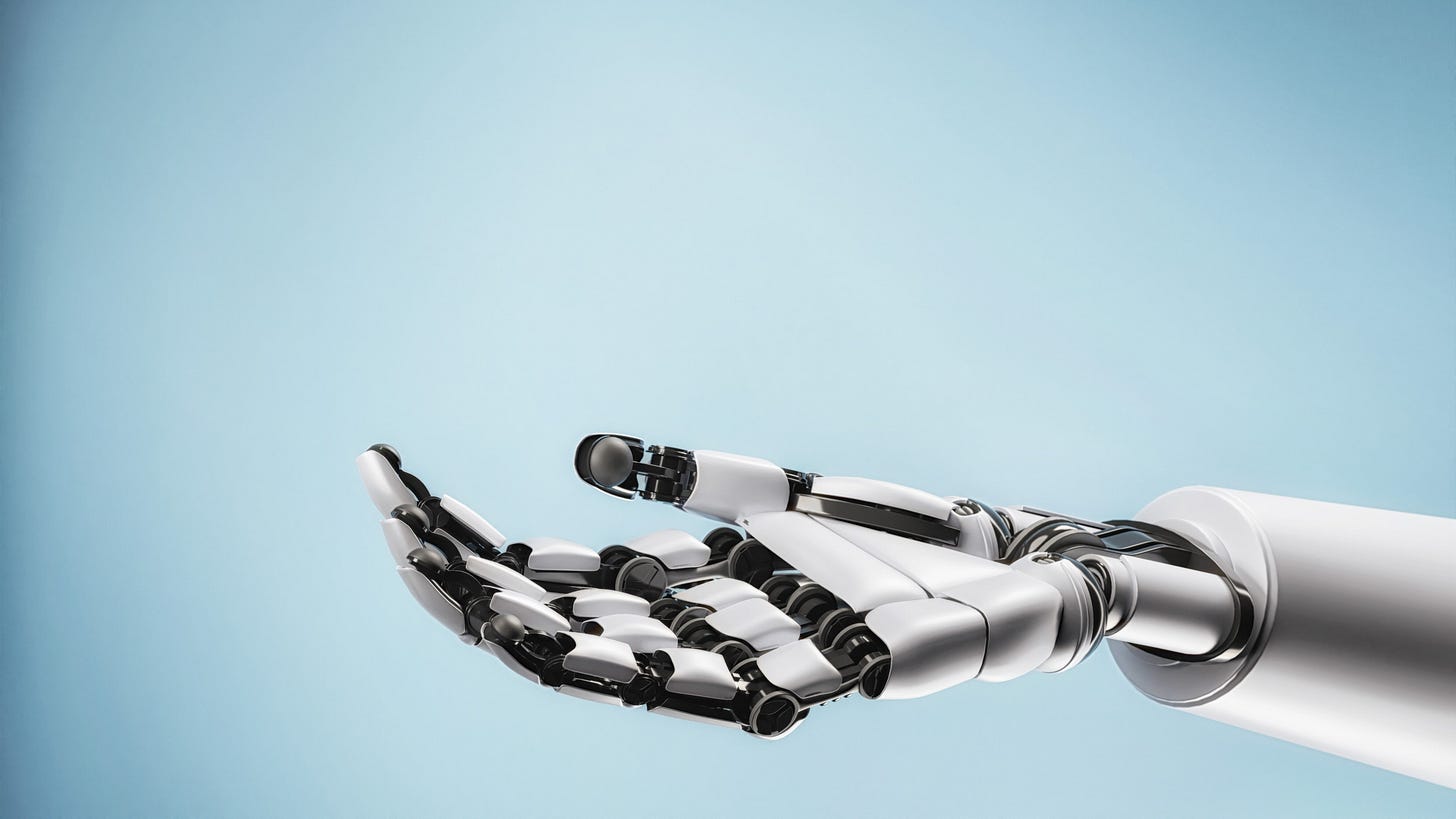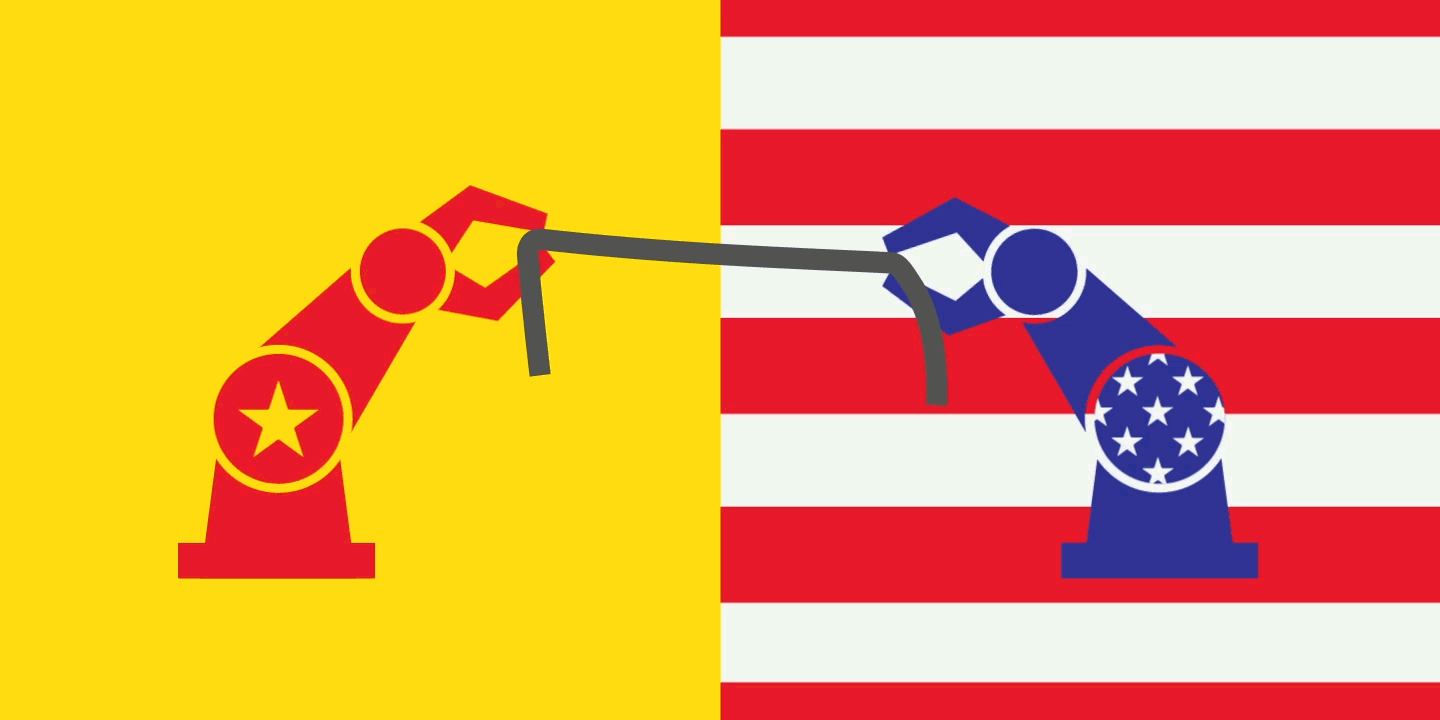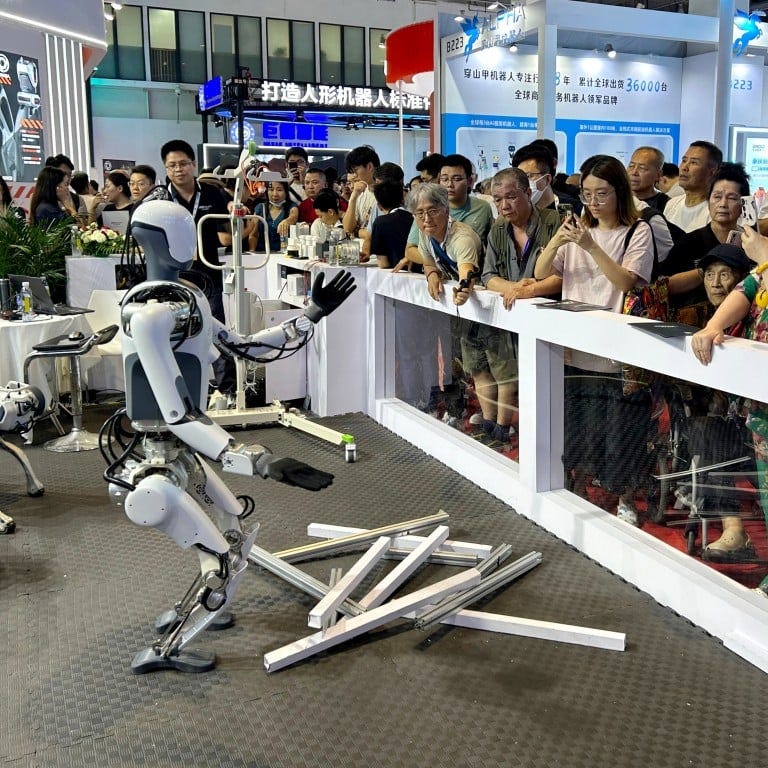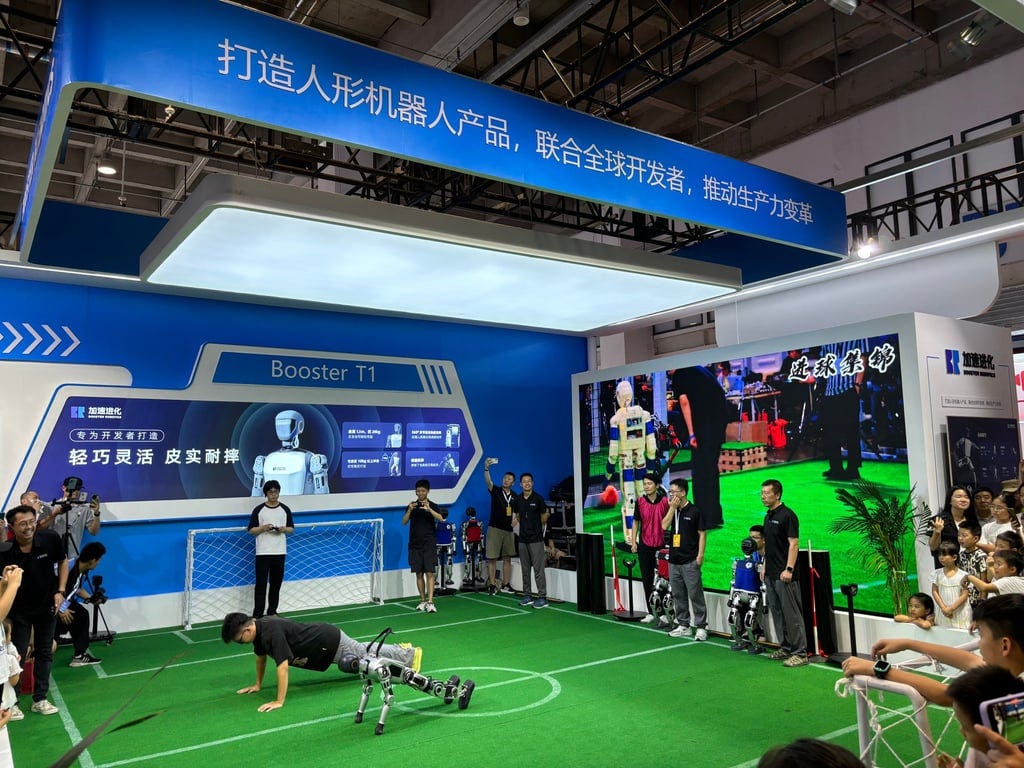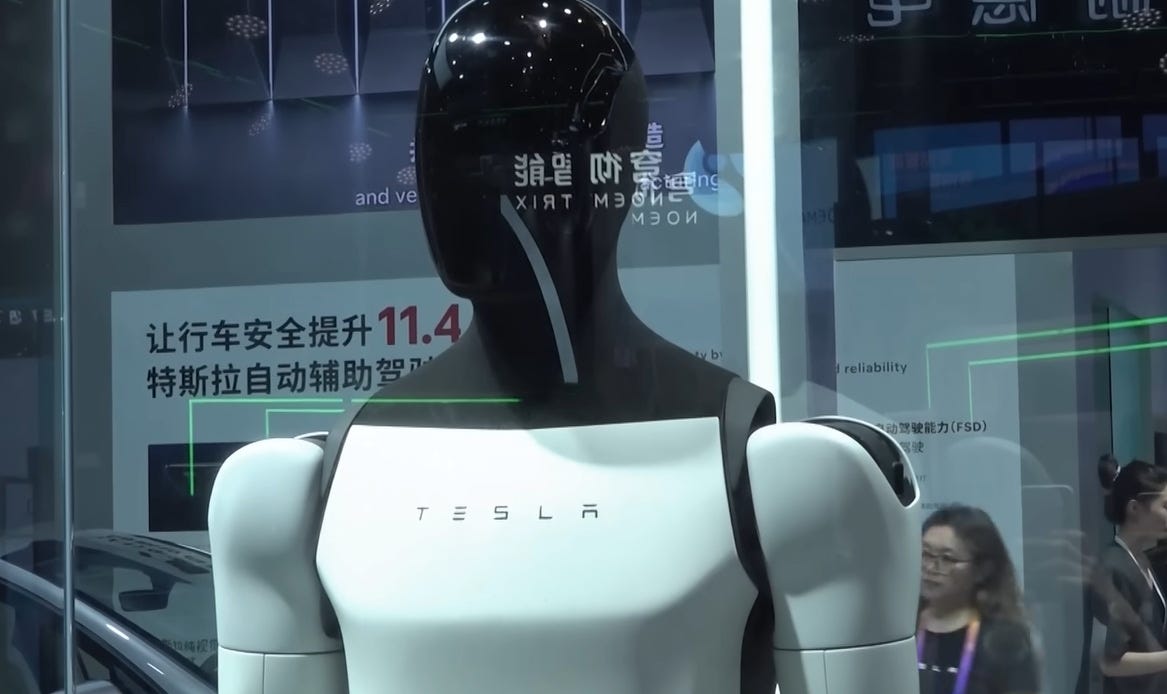AI: 'AI Robots' get closer. RTZ #460
...humanoid robotics recharged with LLM AI 'Foundation Robotics', ramp in US and China
Humanoid Robotics have been the foundation of human AI fears due to imaginative science fiction in books and movies. They’ve been running circles around our in imaginations about all the things that could be wrong about this AI Tech Wave, before the right things begin to happen.
Now, Foundation Robotics (aka LLM AI/Generative AI) technologies are rapidly revamping the multi-decade market for robots, both for business and consumer use. It’s an area I discussed last year, with Google Deepmind re-thinking robots using Foundation Models. OpenAI is doing similar work with humanoid Robot startup Figure, which uses OpenAI’s GPT systems as a core user interface.
And of course Nvidia, led by founder/CEO Jensen Huang is also accelerating his efforts to bring foundation robotic chips and software infrastructure to humanoid and industrial robots. Their Gr00t and Isaac software technologies are an integral part of their efforts, for broad and vertical markets.
And Tesla is in the humanoid robotics game as well of course, with Tesla Optimus.
Which is fitting since the race to apply foundation LLM AI technologies to robots is similar to the race in self-driving cars. An example of course being Tesla’s revamp from logic based self-driving systems, to generative AI based technologies for self-driving, in its latest FSD (Full Self Driving) software system 12.5 and above.
And Elon Musk has made Tesla’s emerging Optimus humanoid robots the next potential trillion dollar plus AI market to capture mainstream attention after EVs and self-driving cars. Not to mention Grok-2 LLM AI of course by xAI.
Wall Street of course is also paying attention with Tesla already receiving a boost from Optimus related potential. And firms like Goldman Sachs are putting out their projections in reports, for the broader Generative AI driven humanoid robots in the coming years potentially reaching $38 billion by 2035:
“Will robots become the next smartphones?”
“The worldwide market for humanoid robots is forecast to be bigger than analysts in Goldman Sachs Research expected even a year ago. The prospects for machines that help with everything from folding laundry to handling hazardous waste have improved as progress in artificial intelligence accelerates and investment in the sector grows faster than anticipated.”
”The total addressable market for humanoid robots is projected to reach $38 billion by 2035, up more than sixfold from a previous projection of $6 billion, Goldman Sachs Research analyst Jacqueline Du, head of China Industrial Technology research, writes in the report. Their estimate for robot shipments increased fourfold, to 1.4 million units, over the same time frame, with a much faster path to profitability on a 40% reduction in the cost of materials.”
But as the report rightfully points out, ‘Humanoid robots require many expensive precision components”. And there is the opportunity for China of course, already a key competitor with the US on regular LLM AI technologies and infrastructure. It’s a topic covered regularly here on AI: Reset to Zero, under the banner of ‘Threading the Needle’ around AI technologies.
And that is the plot twist in our story here today. China as expected has jumped in head first to apply its huge supply chain and technology capabilities into leading the market globally for both humanoid and industrial robots. They plan to do in robotics what they’re already doing globally in leading the market for EVs.
As Reuters explains in a detailed piece “China's robot makers chase Tesla to deliver humanoid workers”, covering a robotics Expo held there last week:
“Nearly 30 Chinese companies showed off models in Beijing this week”
“China has called for mass production of humanoid robots by 2025”
“Tesla plans to deploy 1,000 Optimus robots in factories next year”
“China dominates the market for electric vehicles. Now it's chasing Tesla (TSLA.O), opens new tab in the race to build battery-powered humanoids expected to replace human workers building EVs on assembly lines.”
“At the World Robot Conference this week in Beijing, over two dozen Chinese companies showed off humanoid robots designed to work in factories and warehouses, with even more displaying the made-in-China precision parts needed to build them.”
“China's push into the emerging industry draws from the formula behind its initial EV drive more than a decade ago: government support, ruthless price competition from a wide field of new entrants and a deep supply chain.”
"China's humanoid robot industry demonstrates clear advantages in supply-chain integration (and) mass production capabilities," said Arjen Rao, analyst at China-based LeadLeo Research Institute.”
“The robotics effort is backed by President Xi Jinping's policy of developing "new productive forces" in technology – a point made in brochures for this week's event.”
“The city of Beijing launched a $1.4 billion state-backed fund for robotics in January, while Shanghai announced in July plans to set up a $1.4 billion humanoid industry fund.”
“The robots on display this week draw from some of the same domestic suppliers that rode the EV wave, including battery and sensor manufacturers.”
And China is cleverly leveraging Tesla by encouraging it to bring its Optimus humanoid robots in China, for the ‘Catfish Effect’ that helped its EV market before:
“CATFISH EFFECT' COMES TO ROBOTS”
“When Tesla opened its Shanghai factory in 2019, Chinese officials said they expected the EV pioneer would have a "catfish effect" on China's industry: introducing a large competitor that would make Chinese rivals swim faster.”
“Tesla's Optimus robot has had a similar effect, Hu said.”
“The U.S. automaker first introduced Optimus in 2021, which CEO Elon Musk then touted as potentially "more significant than the vehicle business over time".
“Musk's company is using an artificial intelligence approach for Optimus modelled on its "Full Self-Driving" software for EVs. Chinese rivals and analysts say Tesla has an early lead in AI, but China has the ability to drive down the price of production.”
“Tesla showed off Optimus, mannequin-like, standing in a plexiglass box next to a Cybertruck at an exhibition alongside the conference in Beijing this week.”
“Optimus was outdone by many Chinese humanoids that were waving, walking or even shrugging, but it was still one of the most popular exhibits and thronged with people taking photos.”
"Next year there will be more than 1,000 of my compatriots in the factory," a sign next to Optimus said.”
“Tesla, in a statement, reiterated it expected to move beyond prototypes to start producing Optimus in small volumes next year.”
China already dominates globally in industrial robots:
“ROBOTS ON THE ASSEMBLY LINE”
“Hong Kong-listed UBTECH Robotics has also been testing its robots in car factories. It started with Geely and announced a deal on Thursday to test them at an Audi plant in China.”
"By next year our goal is going to mass manufacturing," said Sotirios Stasinopoulos, UBTECH's project manager.”
“That would mean up to 1,000 robots working in factories, he said. "It is the first milestone towards a large-scale deployment."
“UBTECH uses Nvidia chips in its robots but more than 90% of components are from China.”
“The current generation of production robots - massive arms capable of welding and other tasks - has been led mostly by companies outside China, including Japan's Fanuc Swiss engineering group ABB and Germany's Kuka, owned by Chinese home appliance manufacturer Midea.”
“China leads the world with factory-installed production robots, more than triple the number in North America, according to the International Federation of Robotics.”
I point out all these details on both the humanoid and industrial robot markets to emphasize two key points: 1) they’re all being ramped with the latest versions of Foundation LLM AI technologies, and (2), China has some key advantages in industrial supply chains and scale of production.
US companies, both new startups and incumbents like Google, OpenAI, Nvidia, Tesla and others have the definitive advantage in AI technology innovation. BUT, China remains the place to watch for mass production of these robots at Scale.
And AI technologies’ next iterations in Reasoning and Agentic capabilities, is likely going to be key to humanoid AI robots. Will likely help make AI truly useful to mainstream audiences.
It’s early days again for Foundation Robotics in this AI Tech Wave, but the race has begun for ‘AI Robots’, and it’s a core foundation of AI technologies to come. Stay tuned.
(NOTE: The discussions here are for information purposes only, and not meant as investment advice at any time. Thanks for joining us here)


